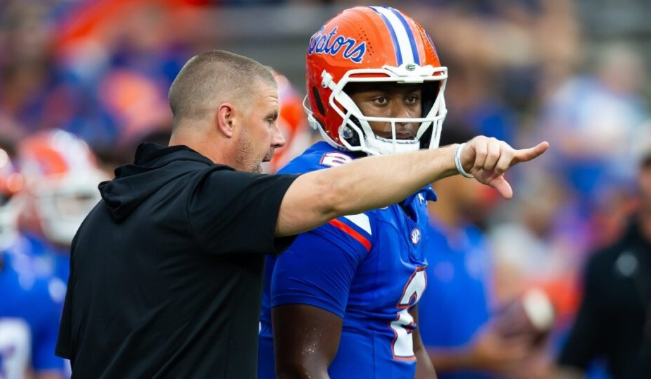Introduction to the SEC Football Rankings
The Southeastern Conference (SEC) stands as a paramount entity in the realm of college football, renowned for its competitive edge and a storied history that spans decades. Dominating both the regular season and bowl games, the SEC has consistently produced elite teams that capture national titles and garner significant fanfare. Institutions such as Texas and Georgia have been at the forefront, exemplifying the strength and prestige associated with the SEC brand. This conference is not merely a collection of programs; it represents a culture deeply ingrained in the fabric of college athletics.
Preseason rankings play a critical role in the landscape of collegiate sports, particularly within the SEC. These rankings are formulated through a combination of expert analysis, team performance from previous seasons, recruiting classes, and projected improvements. The anticipation surrounding these rankings engages fans and boosts team morale, setting the stage for intense rivalries and thrilling matchups. Particularly, the USA Today poll carries significant weight in influencing how teams are perceived heading into the season, as it is one of the leading indicators of expected performance.
Understanding the history and authority of the SEC is vital for appreciating the context of the preseason rankings. Over the years, the conference has produced numerous players who have transitioned to successful careers in professional football, further elevating its reputation. The intensity of competition found within the SEC cannot be understated; thus, the preseason rankings reflect not just the capabilities of the teams, but also the broader narrative of college football. Fans, analysts, and players watch these rankings closely, as they are instrumental in shaping expectations and fueling the excitement that accompanies the new season.
Key Takeaways from the 2025 Preseason Rankings
The release of the 2025 preseason SEC football rankings by USA Today has brought excitement and scrutiny to teams such as Texas and Georgia. These rankings not only reflect the current landscape of college football but also illustrate the evolution of team dynamics based on various influencing factors. Texas, standing strong in the upper echelon of these rankings, showcases their robust recruitment strategies and impactful player transfers, which have markedly enhanced their roster depth. Georgia, with its legacy of success, consistently remains a cornerstone in the SEC, proving that past performance is a strong predictor of future success.
One noticeable aspect of this year’s rankings is the emergence of teams that were previously considered underdogs. These shifts can be attributed to significant coaching changes and strategic player acquisitions that have drastically altered team compositions. Understanding the implications of such decisions is essential, as they not only affect the immediate season but also set the tone for future recruitment and overall program strength. The rankings also reflect how teams have adapted to recent trends in player movement, particularly via the transfer portal, which has enabled lower-ranked teams to bolster their lineups effectively.
Another trend evident in the rankings is the fluctuating performance metrics compared to previous years. The contrast in team placements indicates a period of transition within the conference, suggesting that more teams are vying for top positions. For instance, schools that historically occupied lower tiers in the rankings have made significant strides, often attributing their rise to strategic recruiting and the development of homegrown talent. Analyzing these shifts not only captivates college football enthusiasts but also raises questions about the stability of traditional powerhouses in the SEC landscape. As the 2025 season approaches, these preseason rankings will undoubtedly serve as a compelling narrative for the coming months.
Impact of the Rankings on Team Strategies and Expectations
Preseason rankings, such as those released by USA Today, have a profound effect on the strategies and expectations of college football teams, particularly within the SEC. Coaches and players alike respond to these rankings in various ways, as they recognize the implications on their performance and aspirations for the upcoming season. For teams like Texas and Georgia, which typically enjoy high visibility, being placed among the top-ranked schools can elevate expectations significantly. This can place both pressure and motivation on the players and coaching staff.
The psychological impact of being ranked cannot be understated. Coaches may adjust their strategies to not only meet but exceed the expectations set forth by these rankings. A team beginning the season with high hopes may adopt a more aggressive game plan to maintain or improve its position, while those lower in the rankings might adopt a more tactical approach to surprise higher-ranked opponents. Practice regimens are also likely to become more intense, with a focus on addressing specific weaknesses that could hinder a team’s performance against rivals. Players may experience heightened motivation, driving them to push themselves beyond their limits as they strive to prove their worth in the face of public scrutiny.
Moreover, these rankings play a pivotal role in recruiting efforts. Prospective athletes often look to teams that are frequently ranked higher in preseason forecasts, as those schools tend to offer better exposure and more opportunities for advancement. The implications can be significant; for example, a strong preseason ranking can lead to a positive feedback loop where success on the field attracts exceptional talent off the field. The dynamic effects of preseason rankings extend beyond immediate game strategies, influencing the long-term trajectories of teams in the SEC landscape, shaping future performance and team dynamics.
Conclusion and Looking Forward to the 2025 Season
As we reflect on the recently released preseason SEC football rankings by USA Today, it is evident that the competitive landscape for the 2025 college football season is shaping up to be exceedingly dynamic and unpredictable. With Texas and Georgia among the top-ranked teams, their respective standings could influence not only their conference aspirations within the SEC but the national championship picture overall. The blend of established powerhouse teams and emerging challengers heightens the anticipation surrounding the impending season.
The rankings serve as a preliminary guide, laying a foundation for fans and analysts alike to gauge the trajectory of their favorite teams. While the preseason SEC rankings can ignite discussions and debates among college football enthusiasts, they are merely a starting point, with the on-field performance holding the true measure of success. The SEC has consistently proven to be a breeding ground for thrilling matchups and rivalries that define the spirit of college football.
Looking ahead, some key matchups to watch in the coming season include the anticipated clashes between 2025’s top contenders. As the season unfolds, teams will have the chance to assert themselves and reshape these early rankings. The excitement surrounding upcoming games will not only be a test of skill but also a revelation of resilience and strategy that defines this level of competition.
Therefore, it is crucial for fans to stay engaged with the season’s developments as the rankings evolve based on game outcomes. With every win and loss, the compelling narrative of SEC football will continue to unfold, reinforcing the integral role that rankings play within the context of the overall college football ecosystem. As we embark on this journey through the 2025 season, the stories, rivalries, and surprises await, promising an exhilarating experience for all involved.

